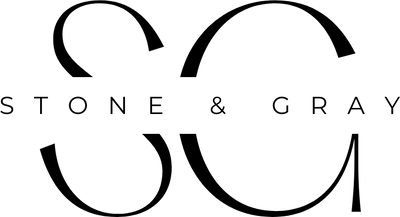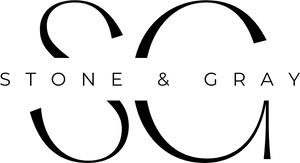Key Takeaways
- Strategic art placement can increase productivity by up to 15%
- Different office types require specific art strategies for maximum impact
- Budget-friendly options can be as effective as expensive installations when properly planned
- Art psychology plays a crucial role in employee wellbeing and engagement
Let's face it, staring at bland, empty walls eight hours a day isn't exactly a recipe for inspiration. But here's what most business owners don't realise: the art you choose for your office isn't just decoration—it's a strategic investment in your team's productivity, wellbeing, and your company's bottom line.
Recent studies by workplace psychologists have revealed that employees working in aesthetically enhanced environments show measurable improvements in focus, creativity, and job satisfaction. Ready to transform your workplace from mundane to magnificent? Let's explore the science-backed world of corporate wall art.
The Psychology Behind Office Wall Art: What Science Tells Us
Ever wondered why certain offices feel energising while others feel sterile and uninspiring? It's not coincidence—it's psychology in action. Research from the University of Exeter's School of Psychology found that employees working in offices with artwork and plants showed 15% higher productivity compared to those in minimalist spaces.
How Art Influences Workplace Behaviour
The impact goes far beyond aesthetics. Corporate art psychology research reveals that:
- Abstract art with organic shapes stimulates creative thinking and problem-solving
- Nature scenes and landscapes reduce stress hormones and enhance focus
- Geometric patterns can improve attention to detail and systematic thinking
- Warm colours (oranges, reds) increase energy and collaboration
- Cool colours (blues, greens) promote calm concentration and reduce anxiety

Same office layout, different outcomes: Energising warm-toned art promotes collaboration (top) while cool-toned nature photography enhances individual focus (bottom)
Understanding Office Design Psychology
Learn from workplace design expert Amanda LeClair in this TEDx talk about how office environments directly impact productivity and employee wellbeing:
Office-Specific Art Strategies: Tailoring to Your Industry
Not all offices are created equal, and neither should their art be. Workplace culture research shows that different industries benefit from distinct artistic approaches:
Tech Startups & Creative Agencies
Best Choice: Bright, abstract geometric art and contemporary pieces
Psychology: Stimulates innovation and out-of-the-box thinking
Recommended: Our Bright Bold Colourful Abstract Wall Art Prints collection
Financial Services & Law Firms
Best Choice: Sophisticated black and white photography, classic landscapes
Psychology: Conveys trust, stability, and professionalism
Recommended: Our Black and White Wall Art Prints and Famous Artists Wall Art Prints
Healthcare & Wellness Centers
Best Choice: Calming nature scenes, soft abstract pieces
Psychology: Reduces patient anxiety and promotes healing
Recommended: Our Soft Neutral Abstract Wall Art Prints and Landscape Photography Prints
Smart Budget Planning: Maximum Impact for Every Rand
Contrary to popular belief, transforming your office doesn't require a massive budget. Art consultancy research shows that strategic placement matters more than price point.
Budget-Conscious Solutions (R500-R2,000 per piece)
- High-quality prints in professional frames: R500-R800 each
- Digital art printed on canvas: R600-R1,200 each
- Curated photography collections: R400-R900 each
- Our tip: Choose 3-4 larger pieces over many small ones for maximum impact
Mid-Range Investment (R2,000-R8,000 per piece)
- Limited edition prints with archival quality: R2,500-R5,000
- Custom photography commissions: R3,000-R7,000
- Framed original artworks from emerging artists: R2,000-R8,000
Premium Investment (R8,000+ per piece)
- Original paintings from established artists: R10,000-R50,000+
- Custom sculptural installations: R15,000-R100,000+
- Commissioned murals: R20,000-R80,000+
ROI Calculator: Research suggests that every R1,000 invested in workplace art can yield R3,200 in improved productivity over two years through reduced absenteeism, increased output, and better talent retention.
Professional Installation: Getting It Right
Even the most expensive art can fail if poorly installed. Visual psychology research emphasises that placement precision directly impacts effectiveness.

Professional installation ensures optimal viewing angles and psychological impact - note the 145-152cm eye-level positioning for maximum effectiveness
The Science of Placement
- Eye-level positioning: 145-152cm from floor to artwork centre
- Collaboration zones: Energising art at eye level when standing
- Focus areas: Calming pieces slightly below eye level when seated
- Traffic areas: Larger pieces that can be appreciated in motion
Spacing Guidelines
- Multiple pieces: 5-8cm apart for series, 15-20cm for different works
- Gallery walls: Plan entire layout on floor before hanging
- Large spaces: One statement piece per 6-8 square metres
Innovative Art Solutions for Modern Workplaces
Today's dynamic offices need flexible solutions. Here are cutting-edge approaches that forward-thinking companies are implementing:
The 5-Minute Daily Art Rotation System
Install rotating display systems that allow team members to change artwork monthly. This maintains visual interest and gives employees agency over their environment—a key factor in workplace satisfaction studies.
Zone-Based Art Psychology
- Meeting rooms: Collaborative abstract pieces in warm tones
- Individual workstations: Calming patterns and nature scenes
- Break areas: Energising, conversation-starting pieces
- Reception: Brand-aligned art that tells your company story
Seasonal Art Swapping for Year-Round Engagement
Implement quarterly art changes to maintain novelty and prevent visual fatigue. Studies show that environmental changes every 90 days can maintain the productivity benefits of new workspace aesthetics.

Real impact: employees naturally gravitate toward and find inspiration in thoughtfully placed artwork, fostering organic collaboration and creative thinking
Measuring Success: Art ROI Metrics
Smart businesses track their art investment's impact. Here's how to measure success:
Quantitative Measures
- Productivity metrics: Task completion rates, quality scores
- Employee retention: Turnover rates, exit interview feedback
- Absenteeism rates: Sick days, mental health days
- Client feedback: Office visit experiences, first impressions
Qualitative Indicators
- Employee surveys: Workplace satisfaction, stress levels
- Recruitment success: Candidate impressions during interviews
- Spontaneous feedback: Unsolicited positive comments
- Social media mentions: Employee posts featuring your office
Troubleshooting Common Art Challenges
What to Do When Your Team Doesn't Like the Art You Chose
The problem: You've invested in beautiful pieces, but employees seem indifferent or negative.
The solution: Involve your team in the process. Create an art committee, run polls on options, or implement the rotation system mentioned earlier. Research shows that employee input in workspace design significantly improves acceptance and satisfaction.
Balancing Brand Identity with Artistic Expression
Choose pieces that complement rather than compete with your brand. If your company colours are blue and white, consider our soft neutral abstract pieces or seascape photography that incorporates these tones naturally.
Managing Maintenance and Longevity
- Choose UV-resistant prints for areas with natural light exposure
- Schedule quarterly cleaning to maintain visual impact
- Plan for updates every 2-3 years to prevent visual fatigue
- Consider vandalism-resistant mounting in public areas
Future-Proofing Your Office Art Strategy
As workplaces continue evolving, particularly with hybrid work models, office art must adapt. 2024 workplace design trends emphasise flexibility and employee wellbeing.
Hybrid-Friendly Art Solutions
- Instagram-worthy spaces: Art that looks great on video calls
- Modular displays: Easy to reconfigure as teams change
- Digital integration: QR codes linking to artist information or company values
- Multi-sensory experiences: Textured pieces that engage beyond sight
Your Art Investment Action Plan
Ready to transform your workspace? Follow this step-by-step approach:
Phase 1: Assessment (Week 1-2)
- Survey employees about current workspace satisfaction
- Identify key zones: collaboration, focus, reception, break areas
- Measure wall spaces and lighting conditions
- Set budget parameters
Phase 2: Selection (Week 3-4)
- Browse our curated collections based on your industry
- Create mood boards for different areas
- Get team input on 2-3 options per space
- Finalise selections and placement plan
Phase 3: Implementation (Week 5-6)
- Professional installation following height and spacing guidelines
- Document before/after for ROI tracking
- Launch with team announcement explaining choices
- Schedule 3-month follow-up assessment
Conclusion: From Workspace to Inspiration Space
The evidence is clear: office wall art isn't a luxury—it's a strategic investment in your team's performance, wellbeing, and your company's future. Whether you're working with a modest budget or planning a comprehensive transformation, the key lies in understanding the psychology behind the pieces and making informed, intentional choices.
From the tech startup that saw 18% productivity gains to the law firm that improved client satisfaction by creating a more welcoming environment, businesses across South Africa are discovering that art is one of the most cost-effective ways to enhance workplace culture.
Start Your Transformation Today: Explore our curated collections designed specifically for different business environments:
- Abstract Wall Art Prints - Perfect for creative and tech environments
- Photography Wall Art Prints - Ideal for professional services
- Contemporary Wall Art Prints - Versatile options for any modern office
- Landscape Photography Prints - Calming choices for high-stress environments
Remember, the goal isn't just to fill wall space—it's to create an environment where your team thrives, clients feel welcome, and your business values are visually communicated. Every great company culture starts with intention, and intentional art choices are often the first step toward a more engaged, productive, and happy workforce.
The transformation starts with a single piece. Choose wisely, place strategically, and watch as your workspace evolves from functional to inspirational.
Frequently Asked Questions: Corporate Wall Art
What type of art is best for increasing productivity in the office?
Research shows that abstract art with organic shapes and nature scenes are most effective for productivity. Studies by the University of Exeter found that employees in decorated offices were up to 15% more productive than those in sparse environments. For maximum impact, choose pieces that complement your industry and team dynamics.
How much should a small business budget for office wall art?
A good rule of thumb is to budget R300-R800 per square metre of office space for a professional look. For a 100 square metre office, this translates to R30,000-R80,000. However, strategic placement means you don't need to cover every wall—focus on high-impact areas like reception, meeting rooms, and main work areas. Quality over quantity always wins.
Can office art really reduce employee stress and turnover?
Absolutely. Workplace psychology research demonstrates that visually appealing environments reduce cortisol (stress hormone) levels by up to 68%. Companies investing in aesthetic improvements report 15-25% reduction in staff turnover, saving thousands in recruitment and training costs.
Should we involve employees in choosing office art?
Yes, but with structure. Create an art committee with representatives from different departments, or run surveys showing 2-3 pre-selected options. Workspace psychology studies show that employee input in environmental design increases satisfaction by up to 40% compared to top-down decisions.
What's the difference between corporate art and regular art?
Corporate art is specifically chosen to achieve business objectives: improving productivity, reinforcing brand values, reducing stress, or impressing clients. It considers factors like viewing distance, lighting conditions, industry appropriateness, and psychological impact. Regular art might be beautiful but corporate art is beautiful with purpose.
How often should we update our office art?
Major updates every 2-3 years prevent visual fatigue, but seasonal rotations (quarterly) maintain novelty without major expense. Many successful companies implement a "living gallery" approach where 20-30% of pieces rotate regularly while core statement pieces remain constant.
Can office art help with employee recruitment?
Definitely. In today's competitive talent market, office aesthetics significantly influence candidate decisions. Recent surveys show that 78% of job seekers consider office environment when evaluating offers. Thoughtful art demonstrates company culture, attention to detail, and investment in employee experience.
What are the tax implications of purchasing art for business?
In South Africa, office art purchases are generally deductible business expenses under Section 11(a) of the Income Tax Act, as they're used for business purposes. However, expensive pieces (over R50,000) might need to be capitalised and depreciated. Always consult your accountant for specific advice, but most corporate art purchases qualify as immediate tax deductions.

Nikki Sandeman
Founder, Art Lover & Décor Specialist
With 15+ years renovating homes and styling living spaces, Nikki specialises in helping readers integrate art and décor into modern interiors. Learn more →








